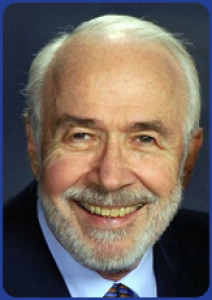WASHINGTON, June 10, 2015 – Last Thursday’s World Trade Organization (WTO) Appellate Body ruling against India’s ban on imports of U.S. poultry may put a small crack in the barriers that India has erected against food and farm products, but it is not likely to fully open one of the world’s most protectionist markets.
The ruling seconded last year’s decision by a WTO panel that upheld a 2012 U.S. complaint that India’s 2007 ban on U.S. poultry contravened its obligations under the WTO agreement on sanitary and phytosanitary (SPS) standards. It agreed with U.S. claims that the ban was not based on international standards or a risk assessment and discriminates against U.S. products. The U.S. industry has argued that such bans are no more than “thinly veiled protectionism.”
The WTO panel gives New Deli 12 to 18 months to bring its regulations into compliance with the ruling, after which the USA Poultry & Egg Export Council (USAPEEC) and the National Chicken Council (NCC) believe the market for U.S. poultry could be worth $300 million a year. India does not see the ruling as an immediate threat because almost 96 percent of retail consumption is from live birds, only the remainder from fresh or frozen chicken parts.
More substantial growth in U.S. exports will depend on persuading India to live up to its WTO obligations by reducing some of the world’s highest tariffs and significant non-tariff barriers embedded in its SPS regulations. India has a large and expanding population (1.3 billion, or one-sixth of the world’s population) and a sizable and growing middle class that the U.S. International Trade Commission (USITC) sees reaching 500 million by 2025.
“Yet despite robust U.S. agricultural exports worldwide, U.S. exports to India are limited, both in value and in the range of products,” USITC said in a 2009 report. In 2008, India received less than one-half of 1 percent of total U.S. agricultural exports and ranked 39th among overseas markets for U.S. agricultural products. The U.S. supplied only 6 percent of Indian agricultural imports in 2008, compared to an 18 percent share of global markets.
The USITC report hints at a huge potential if market barriers are eliminated. “Poultry was the fastest growing segment of the meat market, expanding by over 50 percent between the 2003-4 and 2007-8 marketing periods,” it says. “Consumer demand for processed poultry increased as prices decreased, which can be attributed to the increasing presence of integrated growing, processing and distribution operations with higher production efficiencies.” One of them is a joint venture launched in 2008 by Tyson Foods and India’s Godrej Agrovet to introduce Western-style chicken in chilled bags of whole birds or tray packs of chicken parts for retail.
The level of India’s barriers to most U.S. agricultural products is catalogued annually in reports to Congress by the Office of the U.S. Trade Representative (USTR). In this year’s report, USTR relates how India effectively prohibits imports of products containing ingredients derived from biotech crops, except for soybean oil, and since 2007 has banned imports of U.S. poultry, swine and related products by citing avian influenza in the United States. The WTO panel upheld the U.S. contention that “India’s avian influenza measures breach numerous provisions of the WTO SPS Agreement,” USTR pointed out. It also faults India’s zero-tolerance standards for plant pests such as weed seeds and ergot, blocking U.S. wheat and barley imports, and a requirement for fumigation with banned methyl bromide prohibits imports of dry peas, lentils and some fruits.
“The United States has actively sought bilateral and multilateral opportunities to open India’s market,” USTR says. “India’s new government, which took office in 2014, has discussed accelerating economic reforms in 2015. Nevertheless, U.S. exporters continue to encounter tariff and non-tariff barriers that impede imports of U.S. products into India.”
Opening the India market has been a particular target for Agriculture Secretary Tom Vilsack, who called the WTO decision “a major win for U.S. agriculture.” Vilsack has frequently protested New Delhi’s SPS requirements, imposed in 2003, that essentially preclude U.S. access to India’s dairy market, one of the largest in the world. The USTR report notes, for example, that India requires the U.S. to certify that any milk destined for India has been treated to destroy paratuberculosis with the claim that it poses human health risk – a claim the United States denies. In addition, India insists on religious grounds that source animals have not received any non-vegetarian feeds, which is not scientifically justified, USTR says.
#30
For more news, go to www.agri-pulse.com

